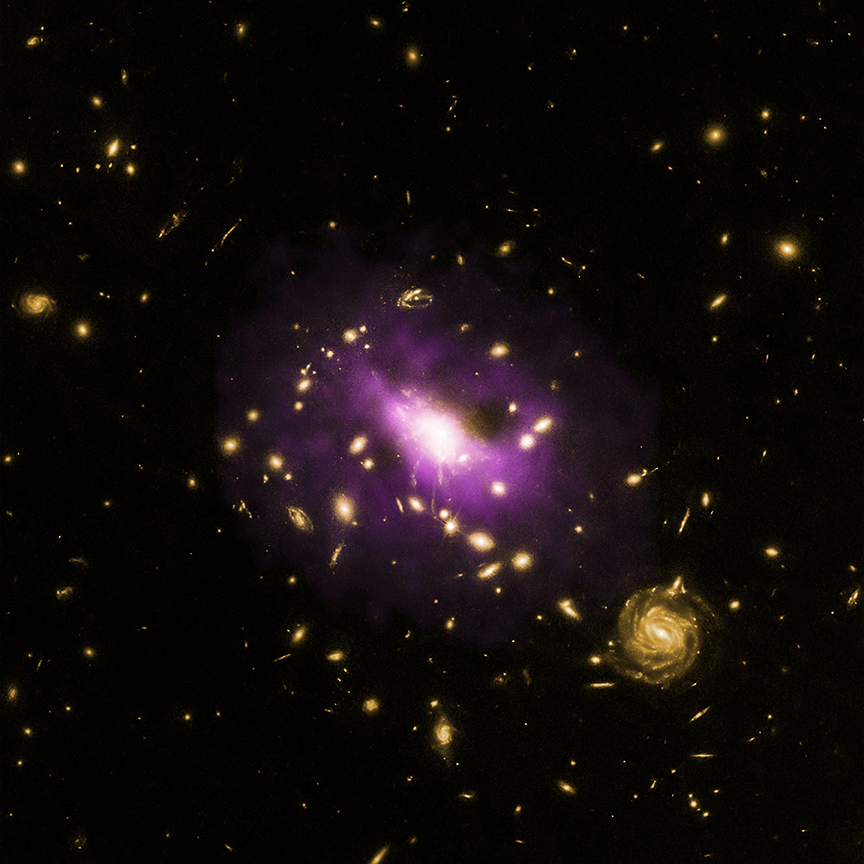
 Credit: X-ray: NASA/CXC/Stanford/J.Hlavacek-Larrondo et al, Optical: NASA/ESA/STScI/M.Postman & CLASH team
Credit: X-ray: NASA/CXC/Stanford/J.Hlavacek-Larrondo et al, Optical: NASA/ESA/STScI/M.Postman & CLASH team
Power of Blackness
Active black holes are voracious eaters, but also blowers of large bubbles. Material falling towards a black hole generally forms a spinning disk around the black hole before it's swallowed, and this inspiralling material in the disk can move fast enough to actually escape the black hole altogether in directions perpendicular to the disk. This outflowing material forms narrow, powerful particle beam jets extending for thousands or millions of lightyears into space. These jets can be extremely powerful and do enormous damage to the environment around the black hole. An extreme example is a black hole in the Perseus cluster, which has generated enormous shock waves in its home cluster. An even more extreme example is a black hole in a cluster of galaxies called RX J1532.9+3021. The image above shows an X-ray image by the Chandra X-ray Observatory (in blue) and an optical image taken by the Hubble Space Telescope of the component galaxies in the cluster. The X-ray bright emission in blue shows glowing hot gas near the center of the cluster. This gas is so dense it should have cooled rapidly, so it's a puzzle why this gas is still there emitting X-rays. Careful examination of the Chandra X-ray image reveals the presence of two cavities in the X-ray emission. Astronomers believe these cavities were created by the particle jets from a supermassive (or ultramassive!) black hole in the central galaxie of the RX J1532 cluster, and astronomers believe these jets may have heated and re-heated the central cluster gas. If so, this black hole must have a mass of billions of solar masses and be spinning rapidly, or else it needs to have a mass of tens of billions of solar masses to produce enough energy to create the observed voids.
Published: June 2, 2014
<
HEA Dictionary ● Archive
● Search HEAPOW
● Other Languages
● HEAPOW on Facebook
● Download all Images
● Education ● HEAD
>

Each week the HEASARC
brings you new, exciting and beautiful images from X-ray and Gamma ray
astronomy. Check back each week and be sure to check out the HEAPOW archive!
Page Author: Dr. Michael F. Corcoran
Last modified Monday, 26-Feb-2024 17:23:36 EST


